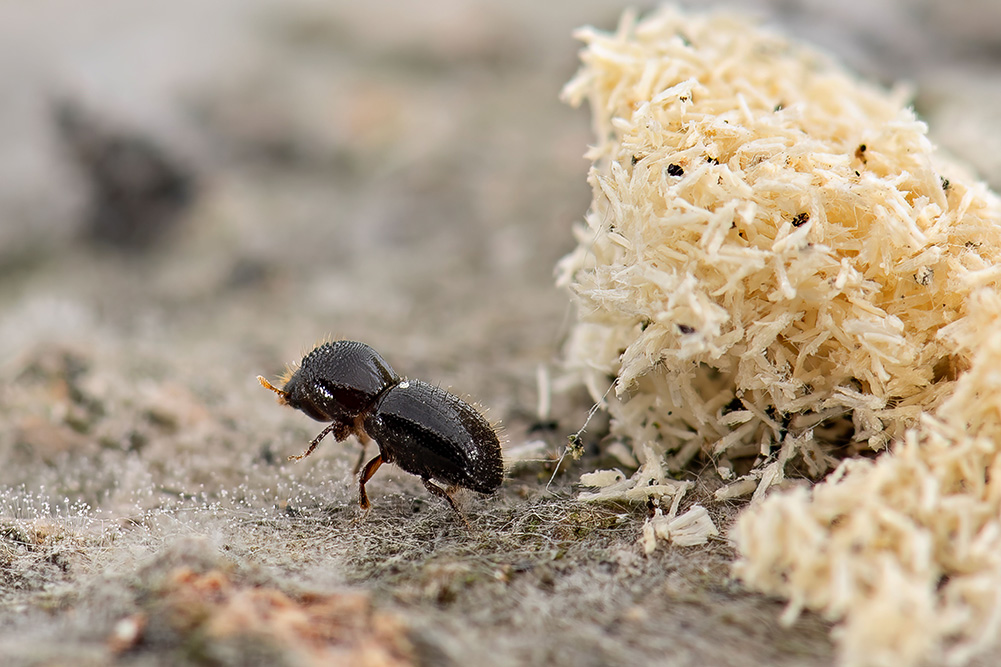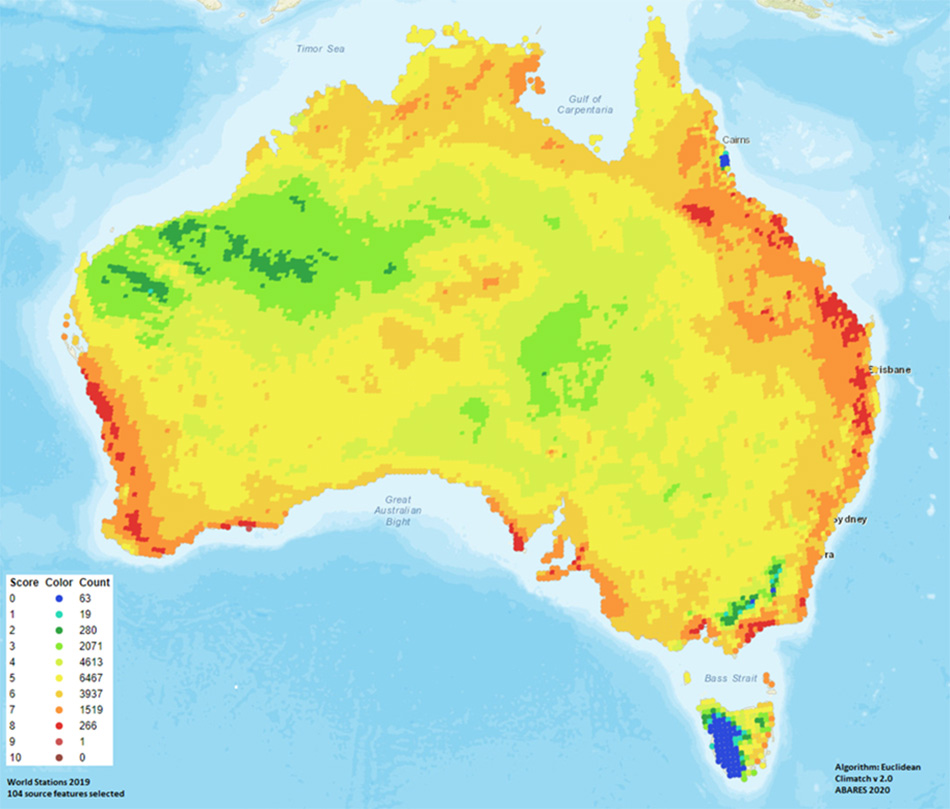Authors: Chandra Wanakula and Sandra Parsons

Summary
Euwallacea fornicatus (Eichhoff), polyphagous shot hole borer (PSHB) [Coleoptera: Scolytinae] is a tiny wood boring beetle native to Southeast Asia.
PSHB is a pest for agriculture, the environment, and social amenity. PSHB attacks a wide range of native, amenity and horticulture production tree species by tunnelling into trunks, stems and branches causing die back and tree death.
Polyphagous shot-hole borer was first detected in East Fremantle, Western Australia in 2021. In response to this incursion and to assist with eradication decision making, the Australian Chief Plant Protection Office requested ABARES undertake a potential distribution model for the beetle.
ABARES developed a Species Distribution Model (SDM) in Climatch v2, using overseas occurrence data available at that time.
The Climatch map in this report shows the areas of climatic suitability for E. fornicatus (PSHB) in Australia.
Key Findings
- The analysis suggests that PSHB has a wide potential distribution in all Australian states and territories. Areas closer to the coast of central and south-western WA, north-eastern and central and southern Queensland, northern NSW, and some pockets in southern coastal metropolitan areas like Melbourne and Adelaide are highly climatically suitable for PSHB.
- This broad climatic suitability, combined with the broad host range of PSHB and the types of impacts it has in other countries, suggest that if it becomes established it has the potential to cause significant economic, environmental, and social impacts in Australia.
Read the full report
Climatic suitability for Euwallacea fornicatus (Eichhoff) - polyphagous shot hole borer (PSHB) in Australia: results from a Climatch analysis (PDF 1.3 MB)
Climatic suitability for Euwallacea fornicatus (Eichhoff) - polyphagous shot hole borer (PSHB) in Australia: results from a Climatch analysis (DOCX 1.6 MB)

